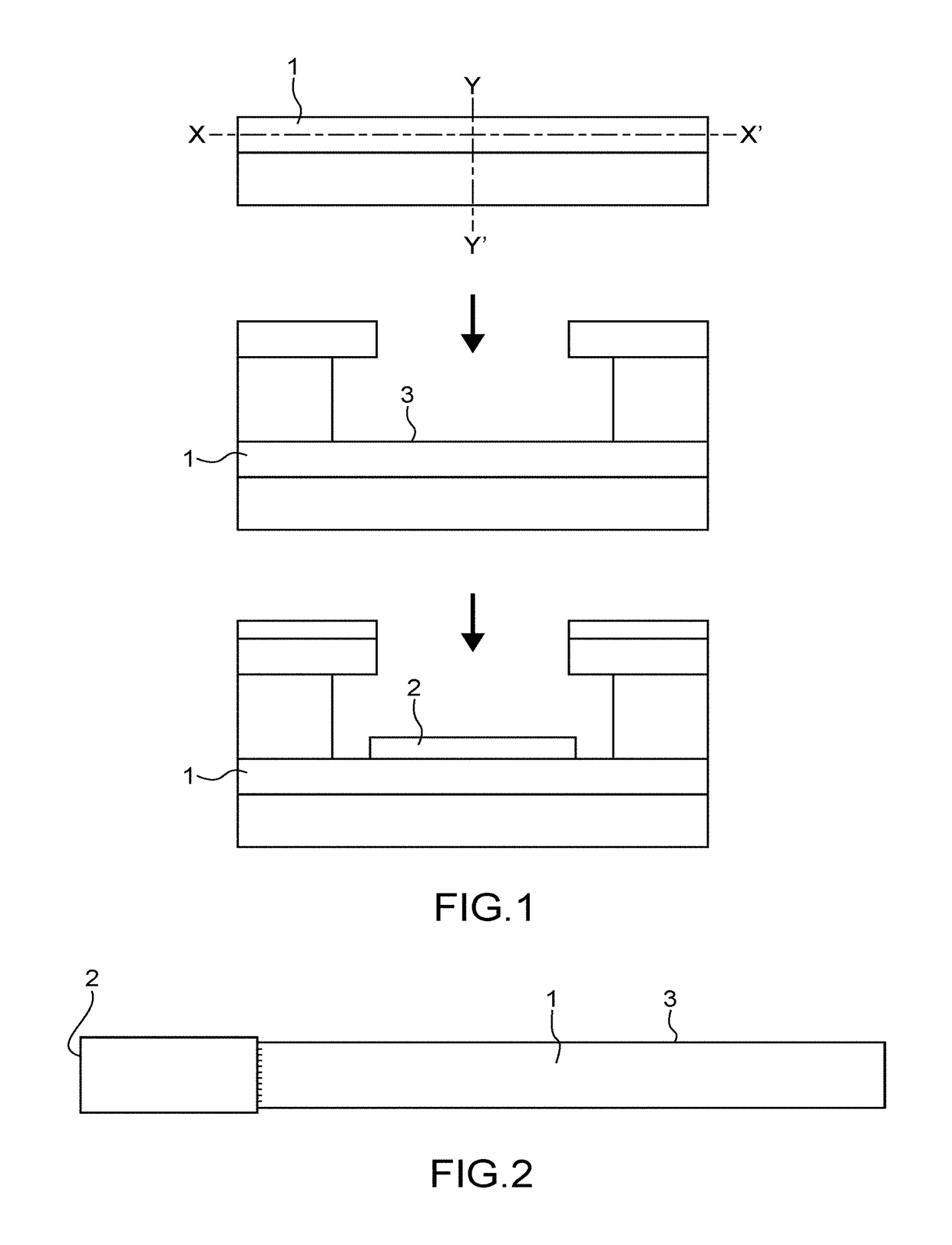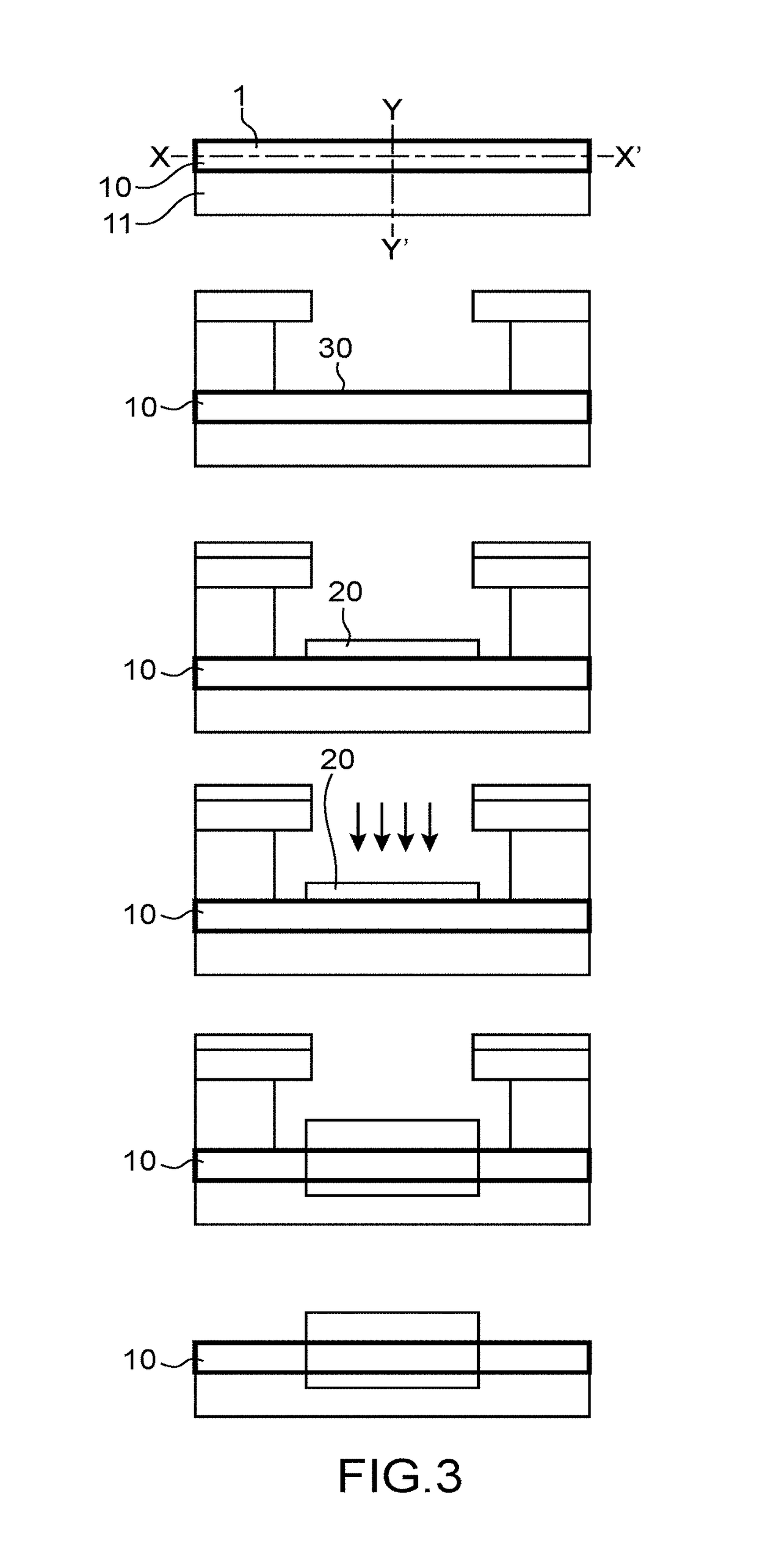Method for manufacturing an electrical contact on a structure
a manufacturing method and technology for electrical contacts, applied in the direction of electric discharge lamps, basic electric elements, electric apparatus, etc., can solve the problems of difficult to make a true edge contact, difficult to implement, and difficult to connect these structures to the outside world using electrodes
- Summary
- Abstract
- Description
- Claims
- Application Information
AI Technical Summary
Benefits of technology
Problems solved by technology
Method used
Image
Examples
Embodiment Construction
[0020]The aims of the invention are achieved, at least in part, by a method for manufacture of an electrical contact on a structure made of anisotropic material NA which exhibits an anisotropic electrical conductivity, where the structure exhibits an axial electrical conductivity σ / / along a first axis XX′ of the structure and at least one orthogonal electrical conductivity σ⊥ along at least one direction YY′ orthogonal to the first axis XX′ of the structure, where the at least one electrical conductivities σ⊥ are less than the axial electrical conductivity σ / / , where the method comprises:[0021]a step for the formation of an electrode with an initial thickness Ei comprising at least one species M, on a first surface of the structure, where the first surface is orthogonal to the at least one directions YY′;[0022]the electrode formation step is followed by a step of implantation of species X through the electrode, into the structure.
[0023]Thus the implantation step can be used to de-s...
PUM
 Login to View More
Login to View More Abstract
Description
Claims
Application Information
 Login to View More
Login to View More - R&D
- Intellectual Property
- Life Sciences
- Materials
- Tech Scout
- Unparalleled Data Quality
- Higher Quality Content
- 60% Fewer Hallucinations
Browse by: Latest US Patents, China's latest patents, Technical Efficacy Thesaurus, Application Domain, Technology Topic, Popular Technical Reports.
© 2025 PatSnap. All rights reserved.Legal|Privacy policy|Modern Slavery Act Transparency Statement|Sitemap|About US| Contact US: help@patsnap.com



